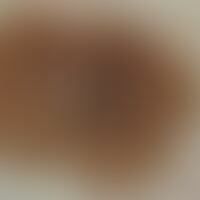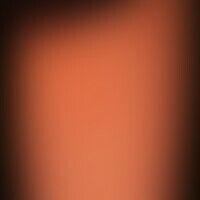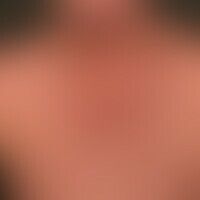Image diagnoses for "brown"
357 results with 1404 images
Results forbrown
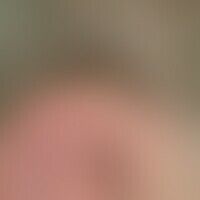
Keratosis seborrhoic (papillomatous type) L82
Keratosis seborrhoeic (papillomatous type); unusual localization of this solitary, completely asymptomatic benign tumor.

Extrinsic skin aging L98.8
Chronic photo-ageing of the skin: moderately pronounced photo-ageing of the skin; in addition to an extensive base tan, irregularly configured pigment spots; further splashes of depigmentation.
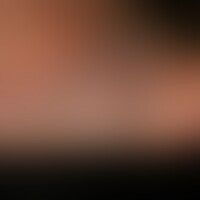
Myzetome B47.9
Myzetome: Indolent, chronic granulomatous infection of the skin and subcutis with circumscribed, pseudotumorous swellings and fistula formation ("Madura foot").

Melanoma acrolentiginous C43.7 / C43.7
Melanoma malignes acrolentiginous: Irregularly bordered and stained completely symptom-free plaque, existing for years. I increased surface growth and development of an "unpleasant feeling" in this 42-year-old patient during the last months.
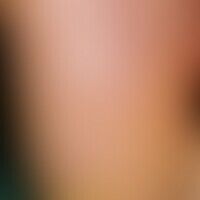
Punctate palmoplantar keratoderma Q82.8

Melanoma cutaneous C43.-
Melanoma malignes (overview): diffuse melanosis in metastatic malignant melanoma.

Circumscribed scleroderma L94.0
Circumscribed scleroderma (plaque type): for about 2 years first occurring, since then progressive in size, large, brown, locally confluent, moderately indurated stains and plaques in the area of the trunk in a 28-year-old female patient.
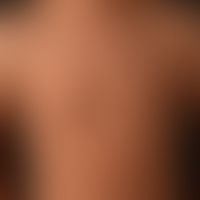
Neurofibromatosis (overview) Q85.0
type i neurofibromatosis, peripheral type or classic cutaneous form. numerous smaller and larger soft papules and aques. several café-au-lait spots.
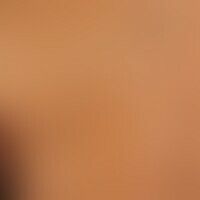
Keratosis seborrhoeic (overview) L82

Kaposi's sarcoma (overview) C46.-
Kaposi's sarcoma endemic. asymptomatic, brown to reddish-livid spots, papules and plaques as well as edema. smooth skin surface, no scaling. shown here is the endemic form which occurs mainly on the lower leg.

Scleroderma and coup de sabre L94.1
Scléroderma en coup de sabre: since early adolescence, a continuously increasing, symptom-free furrow formation in the middle of the forehead has been known.

Tinea corporis B35.4
Tinea corporis:unusually extensive, large-area tinea corporis in known HIV infection.
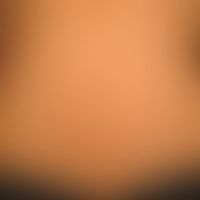
Café-au-lait stain L81.3
Café-au-lait spots: in discrete neurofibromatosis type I. Several medium brown spots in the area of the lower and middle abdomen.

Dyskeratosis follicularis Q82.8
Dyskeratosis follicularis: Infestation of the palms of the hands; in central areas of the palm flat, common keratoses, at the ball of the thumb about 0.1-0.2 cm large, glassy papules.
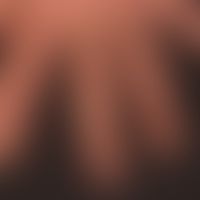
Onychomycosis (overview) B35.1
Tinea unguium. brown-yellow striped lateral nail dystrophy on the index and ring finger. cultural evidence of Trichophyton rubrum and mould species.
